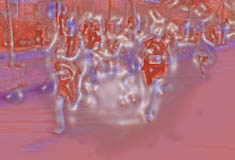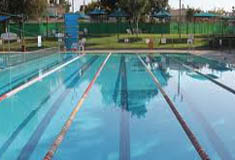Step by Step: Exploring the Concept of Techumim
הרב שי טחןכה אב, תשפד29/08/2024Although those who spend the summer in the country are usually familiar with the concept of techumim, many who visit for just a Shabbat or go camping may not be. Let’s explain the basics of this concept
תגיות:תחומיןהוצאהשבת
Although those who spend the summer in the country are usually familiar with the concept of techumim, many who visit for just a Shabbat or go camping may not be.
Let’s explain the basics of this concept.
Techumim (plural of techum) refers to the boundaries within which a person may travel on Shabbat. According to halacha, a person is generally restricted from walking more than 2,000 amot (cubits), which is approximately 0.6 miles or 1 kilometer, beyond the edge of their city or settlement. This distance is measured from the last house or structure in the area and is known as the techum Shabbat.
last house or structure in the area and is known as the techum Shabbat.
The exact number of steps one may take from the end of the city can vary depending on the length of one's stride, but here's a general calculation:
1. The length of an amah is approximately 18-24 inches (45.7-61 cm). For simplicity, let's use the commonly accepted measurement of 20.4 inches (51.8 cm) for one amah.
2. 2,000 amot would therefore be 2,000 amot × 20.4 inches = 40,800 inches.
3. Converting inches to feet: 40,800 inches ÷ 12 = 3,400 feet (approximately 1,036 meters).
To determine the number of steps:
- The average person's stride length is about 2.5 feet (30 inches).
- 3,400 feet ÷ 2.5 feet per step = 1,360 steps.
So, 2,000 amot is approximately 1,360 steps.
Although people staying in more religious areas can usually identify where the techum ends by signs indicating the boundary's limit, it is still very easy to inadvertently violate this prohibition by walking beyond the allowed distance.
A rough calculation shows that an average person walking at a typical speed will cover 2,000 amot in about 11-12 minutes. Therefore, anyone going for a Shabbat afternoon walk past their bungalow colony is likely to exceed this distance. This makes the halacha very relevant, and one must take care not to overlook it while enjoying their walk.
The reason many aren't aware of this prohibition is that, unlike other Shabbat prohibitions that apply regardless of location, this particular halacha rarely applies when living in a city. In urban areas, houses often extend far beyond the 2,000 amot limit, allowing people to walk any distance in any direction on Shabbat. However, when visiting the country, people may either be unaware of this prohibition or, at best, not have it in mind.
This situation becomes extremely serious if one mistakenly crosses the techum boundary. In such a case, halacha does not permit him to return to the permitted area, and he may find himself confined to an area of just 8 amot (cubits). This restriction can only be lifted in specific circumstances, such as needing to use the bathroom or if the weather is harsh, such as on a hot day, a cold day, or if it is raining(שולחן ערוך או״ח סימן טו) .
Another important point to keep in mind is that this halacha applies to Yom Tov as well. One might mistakenly think that since carrying items in the public domain is allowed on Yom Tov without an eruv, it would also be permissible to walk beyond the distance of 2,000 amot. However, the techum restriction applies to both Shabbat and Yom Tov.
This is a brief overview of the relevant halacha, but it is only a summary. Each individual should discuss their specific situation in detail with their rabbi for a more thorough understanding.
According to Sefer Hachinuch (Mitsva 24) the concept of techumim is rooted in the idea that Shabbat and Yom Tov are times for rest and spiritual reflection, and traveling long distances can detract from that focus. However, there are certain provisions that allow for the extension of the techum under specific circumstances. For example, by establishing an eruv techumin—a symbolic meal or food placed at the edge of the techum boundary before Shabbat—a person can effectively extend their travel limit by an additional 2,000 amot in a specific direction.
Let’s explain the basics of this concept.
Techumim (plural of techum) refers to the boundaries within which a person may travel on Shabbat. According to halacha, a person is generally restricted from walking more than 2,000 amot (cubits), which is approximately 0.6 miles or 1 kilometer, beyond the edge of their city or settlement. This distance is measured from the

The exact number of steps one may take from the end of the city can vary depending on the length of one's stride, but here's a general calculation:
1. The length of an amah is approximately 18-24 inches (45.7-61 cm). For simplicity, let's use the commonly accepted measurement of 20.4 inches (51.8 cm) for one amah.
2. 2,000 amot would therefore be 2,000 amot × 20.4 inches = 40,800 inches.
3. Converting inches to feet: 40,800 inches ÷ 12 = 3,400 feet (approximately 1,036 meters).
To determine the number of steps:
- The average person's stride length is about 2.5 feet (30 inches).
- 3,400 feet ÷ 2.5 feet per step = 1,360 steps.
So, 2,000 amot is approximately 1,360 steps.
Although people staying in more religious areas can usually identify where the techum ends by signs indicating the boundary's limit, it is still very easy to inadvertently violate this prohibition by walking beyond the allowed distance.
A rough calculation shows that an average person walking at a typical speed will cover 2,000 amot in about 11-12 minutes. Therefore, anyone going for a Shabbat afternoon walk past their bungalow colony is likely to exceed this distance. This makes the halacha very relevant, and one must take care not to overlook it while enjoying their walk.
The reason many aren't aware of this prohibition is that, unlike other Shabbat prohibitions that apply regardless of location, this particular halacha rarely applies when living in a city. In urban areas, houses often extend far beyond the 2,000 amot limit, allowing people to walk any distance in any direction on Shabbat. However, when visiting the country, people may either be unaware of this prohibition or, at best, not have it in mind.
This situation becomes extremely serious if one mistakenly crosses the techum boundary. In such a case, halacha does not permit him to return to the permitted area, and he may find himself confined to an area of just 8 amot (cubits). This restriction can only be lifted in specific circumstances, such as needing to use the bathroom or if the weather is harsh, such as on a hot day, a cold day, or if it is raining(שולחן ערוך או״ח סימן טו) .
Another important point to keep in mind is that this halacha applies to Yom Tov as well. One might mistakenly think that since carrying items in the public domain is allowed on Yom Tov without an eruv, it would also be permissible to walk beyond the distance of 2,000 amot. However, the techum restriction applies to both Shabbat and Yom Tov.
This is a brief overview of the relevant halacha, but it is only a summary. Each individual should discuss their specific situation in detail with their rabbi for a more thorough understanding.
According to Sefer Hachinuch (Mitsva 24) the concept of techumim is rooted in the idea that Shabbat and Yom Tov are times for rest and spiritual reflection, and traveling long distances can detract from that focus. However, there are certain provisions that allow for the extension of the techum under specific circumstances. For example, by establishing an eruv techumin—a symbolic meal or food placed at the edge of the techum boundary before Shabbat—a person can effectively extend their travel limit by an additional 2,000 amot in a specific direction.
הוסף תגובה
עוד מהרב שי טחן
עוד בנושא מחשבה








